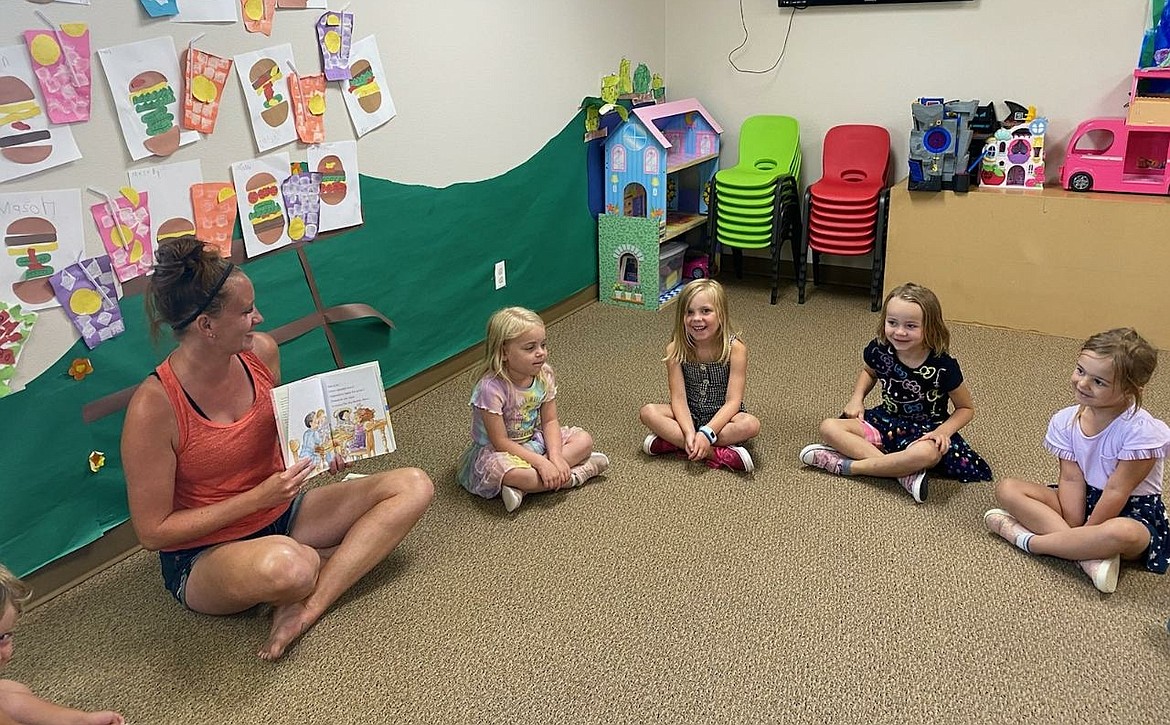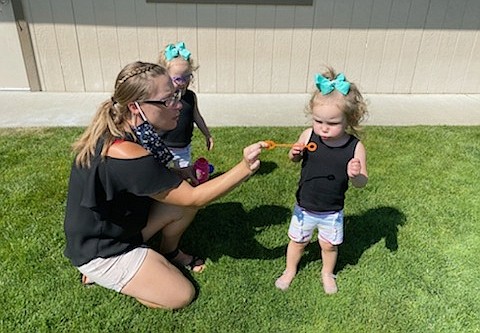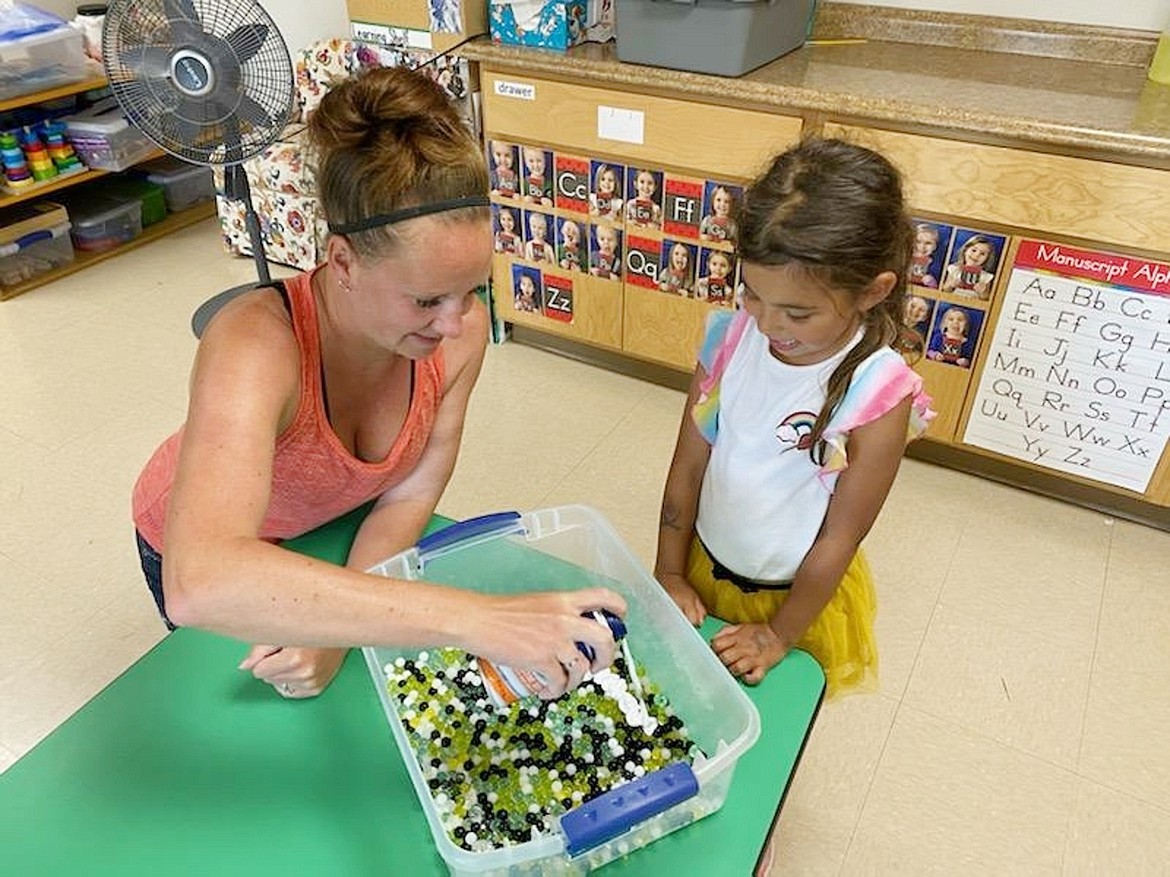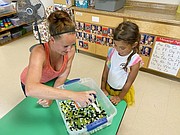CHILD CARE in CRISIS
Enrollment is down, costs are up; families, businesses jeopardized
The child care industry is on the brink of collapse.
"Prior to the current public health crisis, access to quality and affordable child care was an issue for many working parents," said Beth Oppenheimer, executive director of the Idaho Association for the Education of Young Children. "Essentially, supply was not keeping up with the demand of most working parents, and they’ve struggled with child care at some point."
While great strides have been made in the past few years to improve child care systems in Idaho through public and private partnerships, Oppenheimer said, the COVID-19 pandemic threatens to not only undo a lot of great progress, but "it also is causing a collapse in the entire industry."
"Without help, the vast majority of Idaho’s child care providers could potentially be out of business, leaving working parents without many options," she said.
Idaho's child care crisis was at the center of the Idaho AEYC town hall virtual discussion Tuesday on Zoom. It was held to shed light on the troubling statistics and uncertainties that lie ahead for this industry while sending out a call for legislators, municipal leaders and business community members to convey the scope of the emergency and provide guidance on how to address it so Idaho can protect an industry crucial to its families, workforce and economy.
"We're struggling," Chris Bjurstrom, who owns ABCD Daycare in Coeur d'Alene and Hayden with husband Andy, said in a phone interview with the Press.
"We're doing everything we can," Bjurstrom said. "I know at the end of the day I go home just worn out. We have to take every child's temperature. Parents can’t come into the building anymore. I'm out here taking their temperature, and I have a mask on."
Bjurstrom said ABCD closed for two weeks during pandemic shutdowns.
"Zero income," she said. "No small business can sustain that. I am so thankful, we got that (Payroll Protection Program) and that helped us tremendously. I was able to bring all my ladies back to work."
ABCD serves about 175 children and employs 22 workers between both sites. Bjurstrom said payroll had to increase to compensate her employees for coming in earlier and working later.
"When everything closed, we stayed open. It was long, long days," she said. "We've never laid anybody off in 30 years. All of a sudden we have to worry if we're going to have money for rent.
"I've owned ABCD for 30 years, and this is probably one of the toughest years I've ever had."
The National Association for the Education of Young Children in mid-March surveyed more than 6,000 providers from across the country to understand the effects of the coronavirus pandemic right when it hit.
The survey found that 30% of providers said they would not survive a closure of more than two weeks without significant public investment and support that would help retain staff, pay rent and cover other fixed costs; 17% said they would not survive a closure of any kind without support; and only 11% of programs were confident they could survive a closure without any support.
"The findings from that survey were alarming, to say the least,” Oppenheimer said.
Another NAEYC survey titled “Holding on Until Help Comes: A Survey Reveals Child Care's Fight to Survive,” released July 13, found that 86% of respondents are serving fewer children now than prior to the pandemic. On average, child care providers reported enrollment is down about 67%.
“That is important because our child care industry relies on enrollment to keep their businesses afloat," Oppenheimer said. "With the dip in enrollment in these child care programs, it makes it very difficult for our child care industry to survive."
The most alarming data point, Oppenheimer said, is that only 18% of child care programs expect to survive longer than a year without additional assistance, so 41 out of 50 don’t expect to survive longer than a year without significant support.
“While it does sound a little doom and gloom, it kind of is,” Oppenheimer said.
Alex LaBeau, president of the Idaho Association of Commerce and Industry, which comprises large and small employers across the state, said Idaho had a child care problem prior to COVID.
"We were already in the hole from a productivity standpoint as a result of a lack of available child care, approximately $414 million a year," he said. "That's just in the private sector alone."
He said surveys of parents and employers went out across the country on Monday with a large sampling coming from Idaho. He said 80 percent of employers have shifted to remote work where they can, so more workers are home with their kids.
Before the pandemic, half of Idaho's employees missed an average of 16 days of work a year because of a lack of available child care, as well as several hours lost because they had to come in late or leave early for the same reason.
"We look at this as critical infrastructure," he said. "We look at it the same as you would your highways or your electrical systems or whatever. Child care, school systems, are critical infrastructure to a healthy society. And we don't have a healthy society right now, so how are we going to deal with this?"
Lori Wolff, deputy director of the Idaho Department of Health and Welfare, said supporting the child care community is at the top of IDHW's priority list. She said IDHW received $20 million in CARES funds for low-income families and providers. Grants totaling $5 million were distributed May through July because officials were unsure what was going to happen later on. Subsidies of $9 million were paid to providers from April to July, Wolff said.
"We have about $14 million left of the CARES funding and certainly want to get as much of that to providers as possible to keep them sustainable during this uncertain time," she said, adding that those applications started coming in Monday for the next round. "We will process those as quickly as possible, getting payments out to providers as soon as we can."
She said the local market rate will be increased through the Idaho Child Care Program so providers receive larger subsidy amounts for ICCP children.
"We're extending that for a whole year," she said.
Wolff said grants can pay for cleaning supplies, rents, mortgage and other expenses to help child care providers as enrollments drop and costs increase.
"We will continue to assess those needs," she said.





